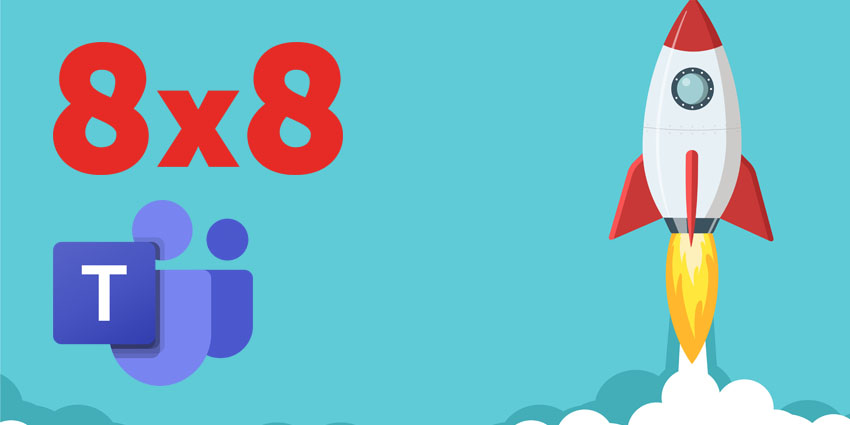Operator Connect has proved popular among businesses since its launch last year, primarily for its ease of use and BYOC approach.
Despite the strong demand, it is still a challenge for service providers to become certified for several reasons – including the backlog of carriers seeking approval and, in some cases, unfamiliarity with how Microsoft works.
DSTNY Automate’s Carrier Automate solution, developed in partnership with Ribbon, fast tracks operators through the process, via the Operator Connect Accelerator Programme.
Here, Mark Herbert, Head of Partner Innovation at DSTNY Automate, provides an overview of the steps service providers need to consider and where to start with winning business via Operator Connect.
Work with an Accelerator Partner to Fill out the Forms
The first step in the process is to fill out the nomination form and then the pre-qualification attestation. To do so you are best placed to choose an Accelerator partner.
Before the launch of Operator Connect Accelerator, Microsoft was handling the accreditation process itself. At this point, service providers were asked to fill in a nomination form and wait for Microsoft to get in touch and start the process.
However, as demand increased, Microsoft launched Accelerator and brought in a small group of trusted partners to help providers navigate the certification journey.
Since then, Microsoft has removed the link to the form from its website, likely due both to high demand and to direct people towards Accelerator firms. The link may well return in the future, but for now, operators should seek out an Accelerator partner.
As well as the nomination form, there is also the pre-qualification attestation. This includes 60 questions! These questions are to find out what your plan for Operator Connect is. Service providers only have 3 weeks to complete this document. This is where an Accelerator can prove invaluable.
Create your Operator Connect Business Case
For many businesses, knowing that their competitors are in the Operator Connect marketplace is enough to press go on signing up to become a provider themselves. And some of the information required in the Operator Connect forms will help you form further detail to your business case.
But in some cases, a deeper business case will be needed for the project to win sign-off.
Herbert said that some organisations struggle here because they have no way of forecasting what demand will look like. He added that, in DSTNY Automate’s experience, service providers are seeing more demand than they’d initially expected.
Mark explains further, that with the Carrier Automate solution it is also possible to keep down expenditure, further reducing the business hurdle to Operator Connect
“We’re seeing an influx of partners who have not forecasted the business case because there are so many unknowns,” Herbert said.
“To help with that, we make our entry cost low. The cost is minimal to the partner, enabling them to justify getting themselves in the Operator Connect marketplace.”
Plan the Implementation
Microsoft outlines a list of qualities that service providers must have in order to become an Operator Connect provider.
The most important part of this process is the connection to Microsoft’s network. Microsoft has set a high bar here to ensure a quality service is delivered to customers.
This is where the Carrier Automate solution can help, giving providers any easy way to start, in order to get a basic service up and running, which they can then build upon.
“We help them with the network connections – whether that’s Microsoft Azure Peering Service (MAPS) or ExpressRoute, and then we plug our platform into Microsoft on their behalf. This means they don’t need to do the full integration themselves,” Herbert said.
“They can use all of the Operator Connect features through our portals rather than having to do the API bridging themselves. This makes the time and cost of implementation extremely low because we’ve already developed the platform.
“Our solution, built in partnership with Ribbon, also draws on our expertise in Microsoft voice integration, learnt through our flagship Direct Routing solution, Call2Teams.”
Use an Accelerator Partner to Reduce Commercial Risk and Support Your Go To Market
As mentioned above, Microsoft is nudging partners towards the Accelerator Programme rather than handling the approval process itself.
Carrier Automate delivers Accelerator via its relationship with Ribbon, and it typically takes between 4-6 weeks to get providers certified – far quicker than when Microsoft was working through the backlog.
Herbert said that DSTNY Automate reduces commercial risk significantly by using SaaS pay-as-you-go model, giving service providers the opportunity to scale.
“The fact they can use our pre-developed platform means there’s no cost comparison to them doing it themselves,” he added. “It would be so expensive.”
Getting ready for Operator Connect is not just about adjusting your technical stack though. It is also important to consider how your Accelerator can help with your go to market, helping you get that all important return on investment.
For service providers looking to access Operator Connect they are at the mercy of Microsoft’s timeline. Historically Microsoft have been known to take their time with incoming applications. Or have gone so far as to cease the application process for extended periods.
Herbert said that rather than just waiting, you have a variety of options available, such as Microsoft Direct Routing, or extending your BYOC strategies to other UCaaS platforms.
Bridge the Gap with Direct Routing
Operator Connect is winning the headlines when it comes to voice in Teams but there are still only a handful of carriers that can provide the service. Direct Routing, however, has far less red tape to cut through.
Herbert said that many service providers are running into problems and seeing their Operator Connect application delayed by several months. This could be an issue – especially if they don’t have any other way of providing Teams voice to their customers.
To help solve this problem, DSTNY Automate offers Direct Routing as a service to carriers and channel partners. The principle is similar to its Operator Connect offering, with the partner leveraging DSTNY Automate’s existing platform instead of having to build it themselves.
Crucially, the end-user experience is almost identical – just with different admin portals used for some tasks.
“With DRaaS they can at least start selling,” Herbert said. “The important thing is they need to understand how to sell Teams voice, so they can start to build out that knowledge in their business while they wait to get Operator Connect approval.”
Consider Alternatives While You Wait
Demand to become an approved Operator Connect provider is high, meaning Microsoft sometimes has to temporarily close the application process.
One option in this situation is to consider DRaaS, as described above. Another option is to look at plugging voice into a different unified communications platform.
DSTNY Automate’s Carrier Automate platform is also compatible with Webex and Zoom, meaning businesses can bring their own carrier to these two platforms as well as Microsoft Teams. So another benefit of using Carrier Automate is carriers and partners get access to 3 or more UCaaS platforms for the effort of connecting to one.
The agnostic nature of Carrier Automate means users only have to be onboarded onto the platform once to enable services across all supported UC platforms.







